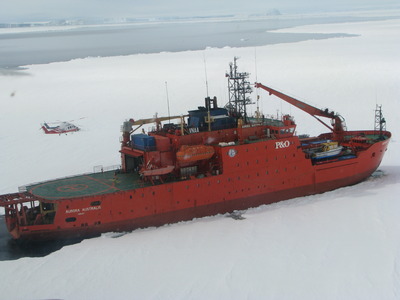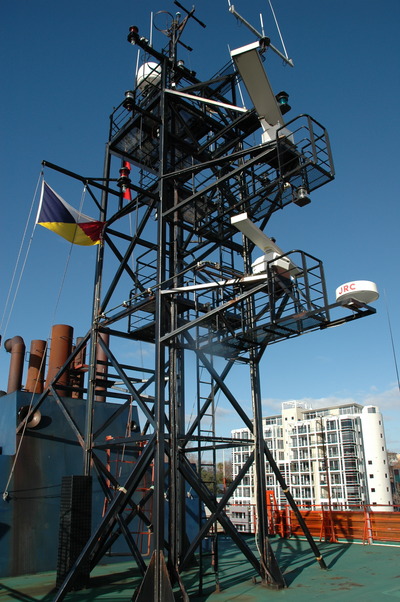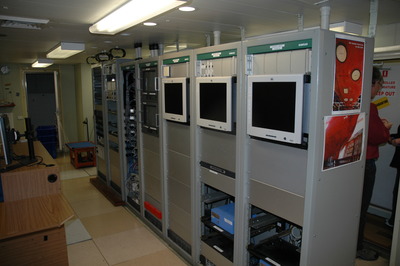Keeping the 'Orange Roughy' connected
By Andy Start, president of global government, Inmarsat
Wednesday, 30 October, 2013
Satellite communications are a crucial part of Australia’s ocean-going Antarctic exploration efforts.
It is now almost a century since Ernest Shackleton set sail on his third voyage to explore Antarctica, and it is fascinating to think of how far sailing and communications technology have come in those 100 years. What would Shackleton have given for the ability to ‘phone home’, not only to speak with loved ones, but to share his findings … as the researchers on Australia’s Antarctic flagship the RSV Aurora Australis are able to do today.
Australia’s interest in exploring the Antarctic for scientific purposes dates back to 1842, when the first call for scientific exploration of the icy continent appeared in a Tasmanian science journal. By 1886, the Australian Antarctic Exploration Committee had been established to investigate, among other things, the formation of research stations and the use of steam-powered ships to penetrate areas inaccessible to sailing vessels.
Today, the Australian Antarctic Division (AAD) is responsible for an ongoing program of experimentation and scientific exploration aimed at better understanding the frozen continent. AAD is responsible for administering Australia’s Antarctic Program (AAP), which was established in 1947 and counts among its membership Australian government agencies involved with Antarctic research, as well as non-governmental organisations, including universities and research institutions, both Australian and foreign.

Under AAD’s auspices, thousands have travelled to Antarctica over the years, to live and work in one of the most challenging environments on the planet. Today, Australia administers three Antarctic stations - Casey, Davis and Mawson - and maintains a permanent sub-Antarctic base on Macquarie Island, situated some 1500 kilometres south of Tasmania.
AAD conducts an extensive marine science program using the Aurora Australis. Affectionately known as the ‘Orange Roughy’ because of its bright colour, the Aurora Australis is a crucial part of the AAD’s work. The vessel has been in service since it was launched in 1989, having been purpose built for the AAD. It is a 3900 tonne icebreaker capable of penetrating 1.2-metre-thick ice at a speed of two knots (about 3.7 kilometres per hour), while carrying 1600 cubic metres of general cargo plus 40 containers, and accommodating 133 people including the crew. The Aurora Australis can also house three helicopters, which fly from the helipad at the rear of the vessel.
The ship is well equipped for marine science research with a commercial-sized trawl deck, and a commercial hydro-acoustic system for the assessment of marine organisms. It has a general-purpose wet lab for processing net samples, a hydrographic lab, fish freezer, meteorological lab, five multipurpose laboratories, a photographic dark room and a scientific workroom.
Staying in touch
While at sea, the Aurora Australis depends on satellite communication services provided by Inmarsat to stay in touch with the AAD.
Dual FleetBroadband (FB) 500 terminals provide a VOIP IAX (Inter-Asterisk exchange) link to AAD’s head office (HO), a direct-dial phone system via an IP GRE (generic routing encapsulation) data tunnel, a matching IP GRE data tunnel to AAD HO for data transfer, and SIP (Session Initiation Protocol) access to the FB terminal for external voice calls.
The Aurora Australis is also equipped with an Inmarsat C Global Maritime Distress Safety System (GMDSS) and Inmarsat Fleet F77 system for ship operations, although all crew email, weather and ice information go through the FB terminals.

The FB data services are used for a great many day-to-day tasks, including the transfer of emails (by store-and-forward compressed file transfer in both directions), scientific data, pictures from three webcams, position reports from the vessel, as well as daily active directory domain controller synchronisation (to keep computers up to date). They’re also used for syncing of the call records database and for receiving GPS positions from the helicopter(s) for in-flight tracking.
Scientists also expect to carry on their normal work while aboard - staying in touch with colleagues in their home institutes, managing long-term experiments, and carrying out whatever ongoing tasks need to be maintained - in addition to running their shipboard research. This adds to the need for communication and data exchange. Most data transfers occur via email, which is handled by AAD’s compressed email transfer system every 15 minutes. The onboard email server services about 120 scientists and crew.
Communication is also crucial to the day-to-day operations of the ship itself. Satellite imagery of ice using the Polar View system, supplemented by images from MODIS and RADARSAT satellites, are received. This data is critical for safe navigation.
A Bureau of Meteorology forecaster is stationed aboard to provide forecasts for ship and helicopter operations. To support this function, the vessel receives daily updates of Bureau of Meteorology model data, as well as data from the Argo global network of ocean probes.

Aurora Australis transmits basic ‘underway’ scientific data every 15 minutes to the AAD data centre, together with data files from particular instruments for integrity checking. And, of course, video footage and other media information is transmitted back to AAD for dissemination.
The advent of reliable satellite communications has made a substantial difference to the way Antarctic exploration and scientific expeditions are carried out. The crew and scientists aboard the Aurora Australis have access to AAD HO for fault-finding help and support, access to software updates for the precision instruments being used, and accurate weather and ice forecasts for better navigation and safety.
Satellite communications systems provide the Aurora Australis with reliable communications in one of the most remote wildernesses of the world. The work of the Australian Antarctic Division, and these important voyages in particular, might not be possible without these communications.
2025–26 Thought Leaders: Tim Karamitos
Tim Karamitos from Ericsson discusses the connectivity requirements of emergency services and...
2025–26 Thought Leaders: Ruth Tovo
Comms Connect panellist Ruth Tovo, from the South Australian SES, discusses the technical...
ARCIA update: celebrating excellence in our industry
The ARCIA Annual Gala Dinner and Excellence Awards took place during the same week as Comms...



